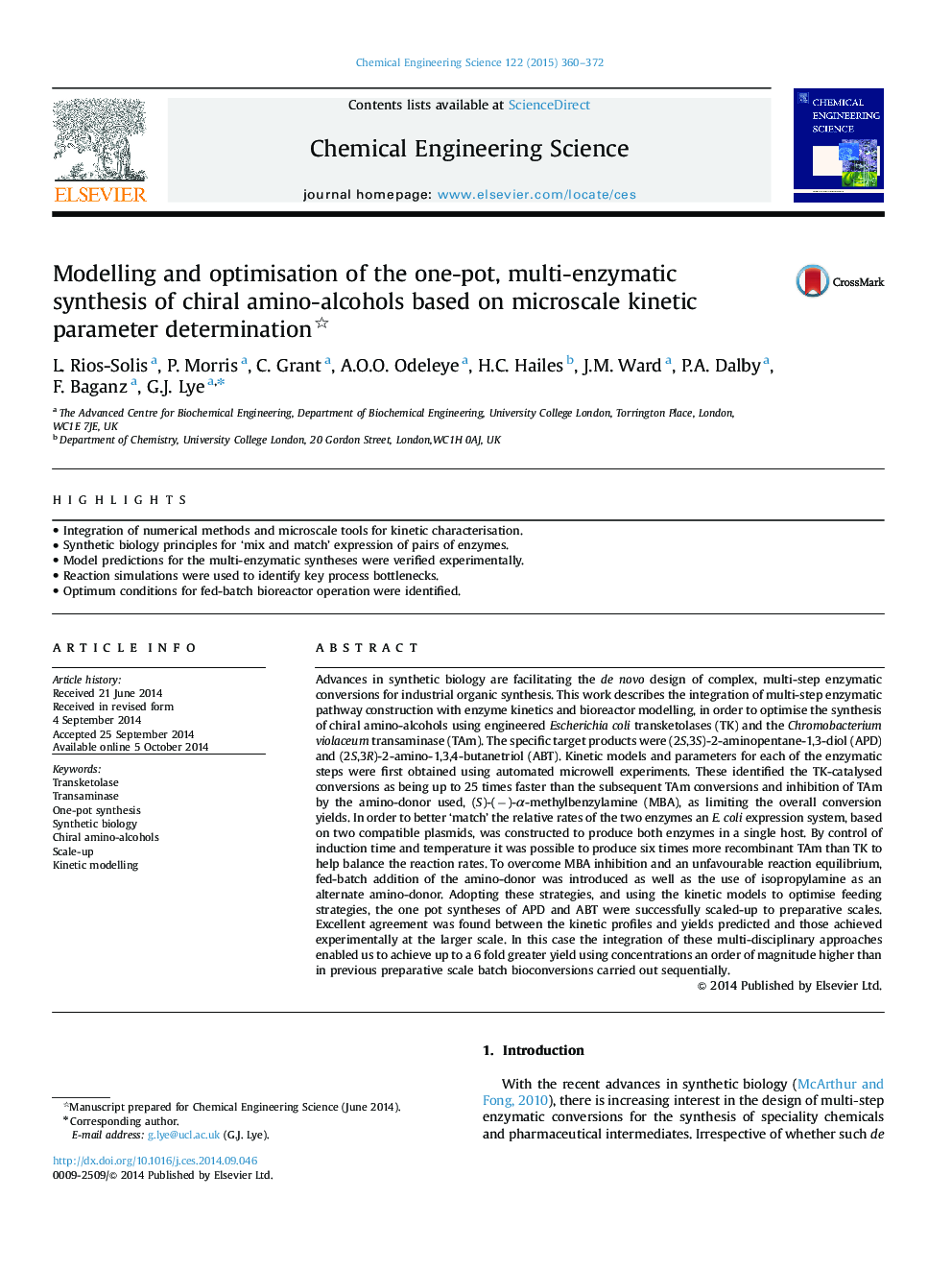| کد مقاله | کد نشریه | سال انتشار | مقاله انگلیسی | نسخه تمام متن |
|---|---|---|---|---|
| 6590759 | 456861 | 2015 | 13 صفحه PDF | دانلود رایگان |
عنوان انگلیسی مقاله ISI
Modelling and optimisation of the one-pot, multi-enzymatic synthesis of chiral amino-alcohols based on microscale kinetic parameter determination
ترجمه فارسی عنوان
مدلسازی و بهینه سازی یک سنتز چند آنزیمی از آمینو اسید های کریل بر اساس تعیین پارامتر جنبشی میکروسکوپ
دانلود مقاله + سفارش ترجمه
دانلود مقاله ISI انگلیسی
رایگان برای ایرانیان
کلمات کلیدی
ترکتلاز ترانس آمیناز، سنتز یک گلدان، زیست شناسی مصنوعی، آمینو اسید کیرال، افزایش مقیاس، مدل سازی جنبشی،
موضوعات مرتبط
مهندسی و علوم پایه
مهندسی شیمی
مهندسی شیمی (عمومی)
چکیده انگلیسی
Advances in synthetic biology are facilitating the de novo design of complex, multi-step enzymatic conversions for industrial organic synthesis. This work describes the integration of multi-step enzymatic pathway construction with enzyme kinetics and bioreactor modelling, in order to optimise the synthesis of chiral amino-alcohols using engineered Escherichia coli transketolases (TK) and the Chromobacterium violaceum transaminase (TAm). The specific target products were (2S,3S)-2-aminopentane-1,3-diol (APD) and (2S,3R)-2-amino-1,3,4-butanetriol (ABT). Kinetic models and parameters for each of the enzymatic steps were first obtained using automated microwell experiments. These identified the TK-catalysed conversions as being up to 25 times faster than the subsequent TAm conversions and inhibition of TAm by the amino-donor used, (S)-(â)-α-methylbenzylamine (MBA), as limiting the overall conversion yields. In order to better 'match' the relative rates of the two enzymes an E. coli expression system, based on two compatible plasmids, was constructed to produce both enzymes in a single host. By control of induction time and temperature it was possible to produce six times more recombinant TAm than TK to help balance the reaction rates. To overcome MBA inhibition and an unfavourable reaction equilibrium, fed-batch addition of the amino-donor was introduced as well as the use of isopropylamine as an alternate amino-donor. Adopting these strategies, and using the kinetic models to optimise feeding strategies, the one pot syntheses of APD and ABT were successfully scaled-up to preparative scales. Excellent agreement was found between the kinetic profiles and yields predicted and those achieved experimentally at the larger scale. In this case the integration of these multi-disciplinary approaches enabled us to achieve up to a 6 fold greater yield using concentrations an order of magnitude higher than in previous preparative scale batch bioconversions carried out sequentially.
ناشر
Database: Elsevier - ScienceDirect (ساینس دایرکت)
Journal: Chemical Engineering Science - Volume 122, 27 January 2015, Pages 360-372
Journal: Chemical Engineering Science - Volume 122, 27 January 2015, Pages 360-372
نویسندگان
L. Rios-Solis, P. Morris, C. Grant, A.O.O. Odeleye, H.C. Hailes, J.M. Ward, P.A. Dalby, F. Baganz, G.J. Lye,
